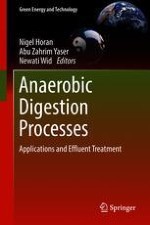2018 | OriginalPaper | Buchkapitel
Sediment Microbial Fuel Cells in Relation to Anaerobic Digestion Technology
verfasst von : Syed Zaghum Abbas, Mohd Rafatullah
Erschienen in: Anaerobic Digestion Processes
Verlag: Springer Singapore
Aktivieren Sie unsere intelligente Suche, um passende Fachinhalte oder Patente zu finden.
Wählen Sie Textabschnitte aus um mit Künstlicher Intelligenz passenden Patente zu finden. powered by
Markieren Sie Textabschnitte, um KI-gestützt weitere passende Inhalte zu finden. powered by
